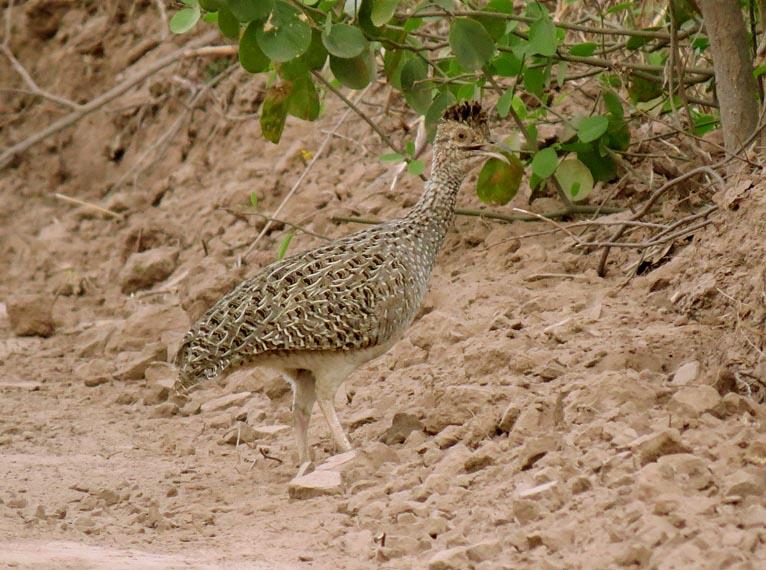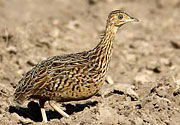
Nothoprocta cinerascens
TAXONOMY
Nothoprocta cinerascens Burmeister, 1860, Tucumбn, Argentina.
Two subspecies.
OTHER COMMON NAMES
French: Tinamou sauvageon; German: CordobasteiЯhuhn;
Spanish: Tinamъ Montaraz.
PHYSICAL CHARACTERISTICS
12.5 in (31.5 cm), 1.2 lb (540 g). Female slightly larger and
darker. Black barring on back and wings.
DISTRIBUTION
Argentina, Bolivia, and Paraguay.
HABITAT
Favors dry savanna woodlands, usually below 3,300 ft (1,000
m), but will live in cropland and open thorn scrub.
BEHAVIOR
The advertising call is a series of seven to 10 clear whistled
notes with considerable carrying power. Home ranges are
about 50 acres (20 ha), maintained mainly by calls but often
overlapping ranges of other males.
FEEDING ECOLOGY AND DIET
Feed on the ground, mostly on insects and small animals, but
also take some fruit.
REPRODUCTIVE BIOLOGY
Males attract groups of two to four females, establish a nest
site, and supervise females while they lay in it. When the females
leave to join another male, the original male incubates
the clutch and rears the brood alone.
CONSERVATION STATUS
Not threatened.
SIGNIFICANCE TO HUMANS
Subject to light hunting but remains common.
Photo Gallery of - Brushland tinamou




 Animalia Life
Animalia Life